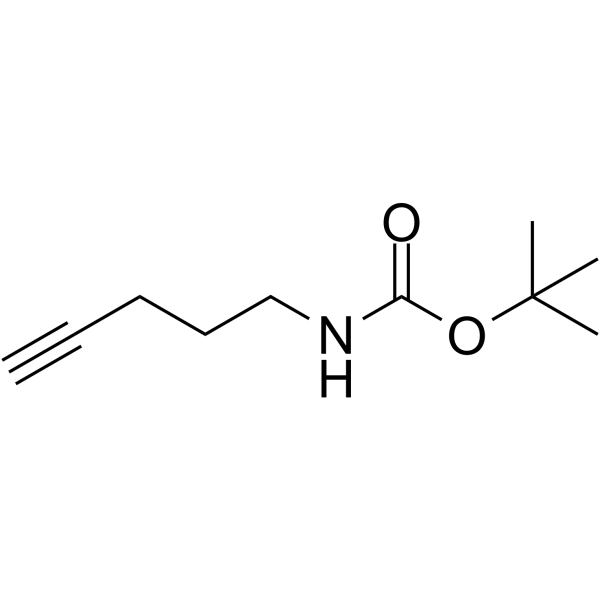
N-Boc-4-pentyne-1-amine
CAS No. 151978-50-6
N-Boc-4-pentyne-1-amine( —— )
Catalog No. M26987 CAS No. 151978-50-6
N-Boc-4-pentyne-1-amine is a PROTAC linker, which refers to the alkyl chain composition. N-Boc-4-pentyne-1-amine can be used in the synthesis of the PROTAC MG-277.
Purity : >98% (HPLC)
 COA
COA
 Datasheet
Datasheet
 HNMR
HNMR
 HPLC
HPLC
 MSDS
MSDS
 Handing Instructions
Handing Instructions
| Size | Price / USD | Stock | Quantity |
| 500MG | 45 | In Stock |


|
| 1G | Get Quote | In Stock |


|
Biological Information
-
Product NameN-Boc-4-pentyne-1-amine
-
NoteResearch use only, not for human use.
-
Brief DescriptionN-Boc-4-pentyne-1-amine is a PROTAC linker, which refers to the alkyl chain composition. N-Boc-4-pentyne-1-amine can be used in the synthesis of the PROTAC MG-277.
-
DescriptionN-Boc-4-pentyne-1-amine is a PROTAC linker, which refers to the alkyl chain composition. N-Boc-4-pentyne-1-amine can be used in the synthesis of the PROTAC MG-277.
-
In Vitro——
-
In Vivo——
-
Synonyms——
-
PathwayOthers
-
TargetOther Targets
-
RecptorPPARγ
-
Research Area——
-
Indication——
Chemical Information
-
CAS Number151978-50-6
-
Formula Weight183.251
-
Molecular FormulaC10H17NO2
-
Purity>98% (HPLC)
-
SolubilityIn Vitro:?DMSO : ≥ 50 mg/mL (272.85 mM)
-
SMILESCC(C)(C)OC(=O)NCCCC#C
-
Chemical Name——
Shipping & Storage Information
-
Storage(-20℃)
-
ShippingWith Ice Pack
-
Stability≥ 2 years
Reference
1.A Camirand, et al. Thiazolidinediones stimulate uncoupling protein-2 expression in cell lines representing white and brown adipose tissues and skeletal muscle. Endocrinology. 1998 Jan;139(1):428-31.
molnova catalog



related products
-
Bacopaside IV
Bacopaside IV is a natural product for research related to life sciences.
-
2-Methoxyfuranoguaia...
2-Methoxyfuranoguaia-9-ene-8-one is a natural product for research related to life sciences.
-
Vanin-1-IN-1
Vanin-1-IN-1 is an vanin-1 enzyme?inhibitor.



 Cart
Cart
 sales@molnova.com
sales@molnova.com


